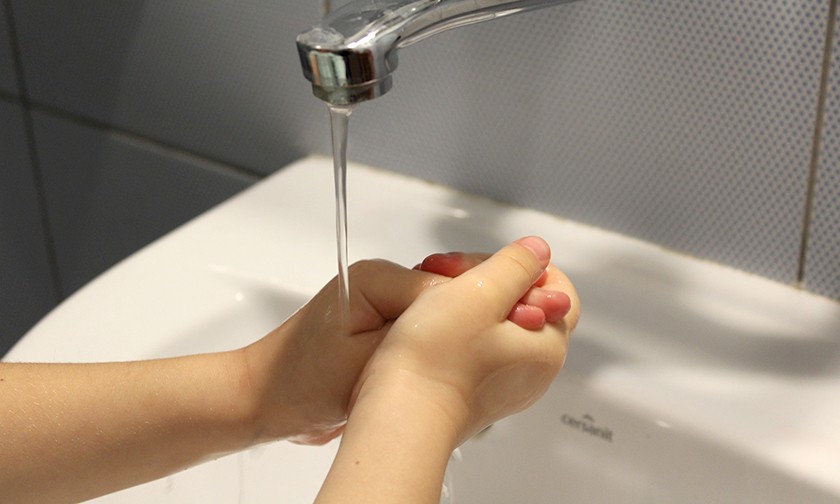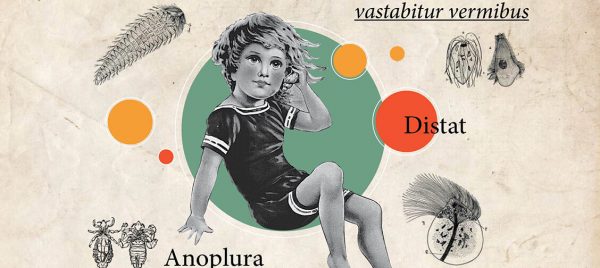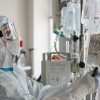 Head lice, worms, and scabies. Many people are sure that this will never happen to their children. But at kindergarten or school, you can contract these diseases at any time. Pediatrician Sergei Butry told Pravmir.ru how to recognize and cure them.
Head lice, worms, and scabies. Many people are sure that this will never happen to their children. But at kindergarten or school, you can contract these diseases at any time. Pediatrician Sergei Butry told Pravmir.ru how to recognize and cure them.
Don’t Smear Your Head with Kerosene
“What should parents do if they find lice on their children’s head?”
“Consult a doctor. It is essential not only to establish the diagnosis, but also to determine the method of treatment: to choose a course, to determine its length, to decide the best method to disinfect the house and things, and to decide what to do with contacts. These questions are quite difficult to solve simply on the basis of some articles on the Internet. Therefore, the doctor will help the patient.
But pediculosis, as a rule, is not difficult to treat at home. It requires washing the hair of a patient with a special shampoo twice at intervals of nine days, this is fundamentally important. As long as the parents have minimal information on how to perform it correctly and follow the instructions for the drug, this is normal practice for the first episode.
It is also important to know that finding nits in your hair is not a reason for treatment. It is required only when you identified live individuals, this is a fundamentally important point.
But if the treatment was ineffective and the lice reappeared after one or two weeks, then it is better to go to the doctor. These parasites sometimes have resistance to permethrin, and then you have to start using reserve agents, combine two different drugs and explain the mechanical methods of struggle. Therefore, a medical conversation is already essential here.
In 90–95% of cases, parents do not go to the doctor with independently diagnosed head lice. Often they are afraid of judgment and try to cure the child themselves.”
“A common practice for treating head lice used to be smearing the head with kerosene before. How effective was it?”
“This should never be done in any case!
Kerosene is extremely flammable and can ignite. Moreover, people do not always know why this can happen.
In order for the kerosene vapor to flare up, for example, a spark from switching on a lamp nearby is enough. It will be a disaster.
In addition, this is an ineffective way of struggle with lice. Lice often can endure even half an hour of being in kerosene and survive.”
“Should the whole family be checked for pediculosis if a child has lice?”
“Yes, it is desirable to check the whole family, but the parents can do it themselves. Adults are quite attentive to hygiene and do not become infected very often.
Spruce people pay attention to itching quickly enough. Mothers are more susceptible to infection, since, as a rule, they comb their children’s hair, do their hygiene and are in closer contact. Dads very rarely get infected due to the fact that they are slightly less prone to body hugs and have short hair.”
“How to disinfect things and an apartment?”
“Lice without regular nutrition, and each individual makes 4-5 bites a day, rarely survive more than a day.
Medical reference books recommend wrapping soft toys and items that cannot be washed and leaving them wrapped up for three days. After this period, things are guaranteed not to be contagious.
If we are talking about some very large infection, when the whole apartment is flooded with lice, or in the case when the parents are very suspicious and it seems to them that there are lice everywhere, you can just move out of the apartment for a week.
Clothes and bedclothes should be washed in a washing machine at the highest temperature possible. Lice are insects, they do not tolerate temperatures of 90 degrees under any conditions.”
Is you child grinding his teeth at night? It doesn’t mean he has worms
“What are the signs of a worm infection?”
“Different worms have different symptoms. When we talk about helminthic invasions, we usually mean ascaris (ascariasis) and pinworms (enterobiasis). These are the most common species. But in reality there are many more.
Roundworms usually do little harm. They may be indicated by a very persistent and large increase in eosinophils in the general blood test, as well as anemia, which does not go away for a long time. They are most often detected by chance, as a result of a screening analysis of feces for worm eggs.
Pinworms have their very typical symptom – persistent itching of the anus, when it itches constantly.”
“How often should you get tested?”
“In our country, there is a low parasitic load, and there are no developed check-ups for this case. For young children attending kindergarten, it may be relevant to do two tests once a year: checking feces for eggs of worms and scraping for enterobiasis.”
“If a child grinds his teeth at night, does it mean he has worms?”
“No, it’s a myth. This is called bruxism, it occurs in most children at different periods of life and is not a symptom of worms. When bruxism is rare and sporadic, this does not mean anything. When it lasts for many hours a day, it can speak indirectly of anxiety and it can be a symptom of developmental abnormalities (that are obvious without bruxism).”
“If the family has pets, do children need to regularly, for example, once every six months, take pills for worms prevention?”
“If there are pets in the house, it does not impose the need to pre-treat the worms prophylactically. Humans have few worms in common with dogs and cats. These animals do not get sick with enterobiasis and ascariasis. There is a risk that after walking on the street, they can bring eggs of worms on the wool.
Pets can infect us with other diseases, so you need to observe hygiene when cleaning the cat litter box and treat the animals themselves according to veterinary rules.

Photo by Tatiana Syrikova / Pexels
The WHO has a list of countries that do have recommendations to give prophylactic drugs against worms once or even twice a year. But we must understand that this is a forced measure, because the drugs are not harmless (a number of children develop side effects from them, which is especially sad, when the drug was given prophylactically, and not for a confirmed infection). First, more than half of the children in those countries are infected with worms, and second, the quality of medical care there is very poor. Therefore, the lesser evil is to give remedies for worms prophylactically. But Russia does not even come close to having the level of infestation of children with worms to recommend this in our country.
A worm infection, like any other disease, should be treated only after the diagnosis is confirmed.”
“How to minimize the risks of getting infected?”
“Teach you child basic hygiene measures: washing their hands, cutting nails in time and not biting their nails, trying not to lick their hands after communicating with street animals, because there may be parasite eggs on the wool.”
“Having identified the worms with the help of tests, can you buy a medicine at the pharmacy and treat the child yourself?”
“I would advise you to consult a doctor, since the child may have an individual intolerance to the drug, and besides, there may be complications in the form of side effects. Also, with self-medication, parents can choose non-optimal treatment regimens, they will not be able to monitor the recovery and competently treat those who were in contact with the child.”
“If a child is diagnosed with worms, should the whole family be tested?”
“This is relevant for enterobiasis, because it is extremely contagious.
With ascariasis, this is not necessary, it is not very contagious, especially among adults, since they observe hygiene and it is difficult to get infected for them.”
“How dangerous is it if a child has worms for a long time?”
“If we talk about ascaris, then it is not very dangerous. After a while, the child can get rid of the worms himself.
With pinworms, everything is more complicated. They can take many useful substances from our food, and due to the fact that the child has been living with these parasites for many years, anemia may develop. There may be severe abdominal pain. Situations have been described when pinworms become tangled and cause blockage of organs, for example, obstructive jaundice due to the fact that they clogged the common bile duct. These are, of course, rare cases, but this can happen.
There is nothing good in having worms: they use us and harm us, even if they do not set the goal of killing us (this is the difference between parasites and predators). They eat our food, cling to our intestines, release toxins that can be absorbed into our bloodstream, cause inflammation, and so on.”
It’s Dangerous to Treat Ringworm by Yourself
“What is ringworm and how to identify it in a child?”
“This is a very outdated term. We are talking about fungal skin lesions, among which the most common are two types – microsporia and trichophytosis. This is what we call ringworm. There are many more different types, but they are much less common.
It looks like a ring-shaped skin lesion, which begins with a small reddish-pink peeling spot, it gradually grows to the sides, discolors in the center. It looks like a ring with an already healed center and a slightly flaky circle slowly spreading out to the sides. If the lesion is on the scalp, then it usually cuts the hair, but this is also not a necessary symptom. The affected area first of all looks ugly, hurts a little, itches a little and sometimes tends to fester very strongly, forming a “kerion”.”
“What to do if a child is suspected of having this disease?”
“Definitely go to the doctor. It is completely unacceptable to go to the pharmacy and self-medicate.
If, with head lice, scabies or worms, it is still possible to imagine a relatively safe and effective self-treatment, then for fungal skin lesions, treatment should be strictly prescribed by a doctor.
This is a fairly common recurrent disease, it can recur even with treatment under medical supervision.
Those drugs that are taken orally are extremely toxic. Up to the fact that doctors prescribe a liver function test before starting treatment, during and after, in order to track toxic drug hepatitis in time, if it begins to develop as a result of taking drugs. This is a rather aggressive medicine and should not be taken without medical supervision. Unfortunately, in Russia it is sold without a prescription, but if parents buy it and start giving it to their children on their own, medicinal hepatitis can begin, which can greatly harm the child.
And even local preparations are not harmless and are aggressive. Therefore, it is better to go to a dermatologist or pediatrician.”

Photo by _Alicja_ / Pixabay
“Can ringworm be confused with other diseases?”
“Yes, there are many diseases similar to it. For example, atopic nummular (coin-shaped) dermatitis. Outwardly, these diseases are very similar. In doubtful cases, a scraping is taken, we look at the mycelium of the fungus and conduct a trial treatment.
Atopic dermatitis will not respond to trial therapy with an antifungal drug, but fungal infections will. This is not the case when parents can easily see the difference, they will not cope with it and will harm the child.”
“How contagious is it?”
“It is moderately contagious with skin-to-skin contact, especially with children with poor hygiene practices. It is contagious enough. Within the family, this happens quite rarely, simply because everyone is washing their hands and monitoring the hygiene and handling of door handles especially carefully when they know that someone in the house is sick.
The main thing is to understand that the correctly prescribed treatment makes the patient non-infectious within a day from the beginning of the treatment.”
“Is this skin disease more dangerous to some particular people?”
“Traditionally, children with immunodeficiencies are at risk. But these are not the children who often get ARVI. We are talking about children with pustular skin diseases, with repeated pneumonia, which occurs more often than three times a year, and other similar manifestations, who are treated by immunologists and receive immunoglobulins. These children have extremely difficult fungal infections.”
I took someone else’s pen and got infected “How does scabies occur?”
“It is an extremely contagious and widespread disease caused by microscopic mites. It is enough to use a common thing – clothes, bracelet, pen, or a notebook – to get infected.
Most often, children attending kindergarten and primary school get sick with scabies, since they are in very close contact. The risk of infection in adolescents also increases when they start kissing and hugging.
Doctors call scabies the “big ape” because it can mimic anything.
Any pediatrician and dermatologist, when he sees an itchy dermatosis, which could not be accurately diagnosed immediately, or there is no quick response to treatment, knows that he should immediately think about scabies. Because it festers and may look like impetigo, or it may look like atopic dermatitis, affecting the same areas. It can be very different.
In the classic version, in the first days or weeks of the disease, skin lesions are quite typical: entry and exit are points located a centimeter apart, and a walk that looks like a cave inside the skin. This place is extremely itchy.”
“Which parts of the body suffer more from scabies?”
“Scabies loves delicate skin. Interdigital spaces, zones near the navel, pubis, genitals are especially susceptible to it. But it can appear anywhere on the body, especially in children, whose entire skin is tender.
There are primary and secondary elements in scabies. The primary ones are at the spot where the tick bit, drilled and got out. And the secondary ones are when the saliva of the tick is absorbed into the skin, causes an allergy, the so-called papular urticaria, and the rash begins to appear on any part of the body, even where we will never find a tick. In other words, two types of rash appear.”
“If parents suspect the child has scabies, what do they do?”
“Scabies is not easy to detect, there are a number of difficulties at the stage of diagnosis, since it can be a “skillful monkey”, and it is also difficult to control its curability. It is better not to treat it by yourself, but to see a doctor.
Until the child undergoes at least the first treatment, he should be at home. The rules for disinfecting things and the apartment when someone is sick with scabies are the same as with head lice.”

















